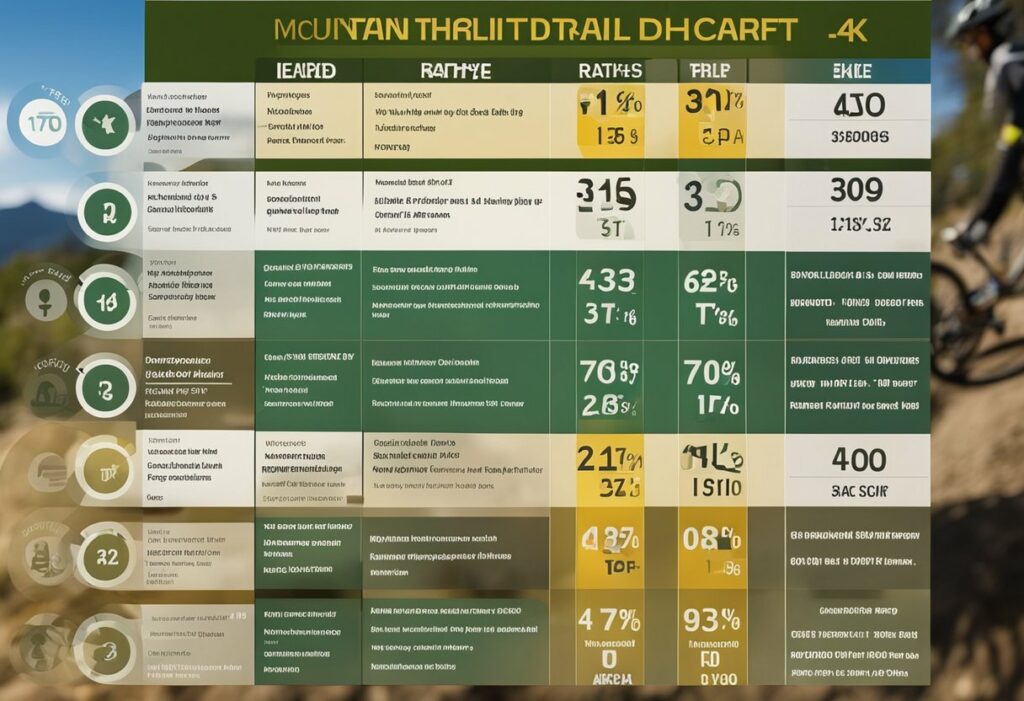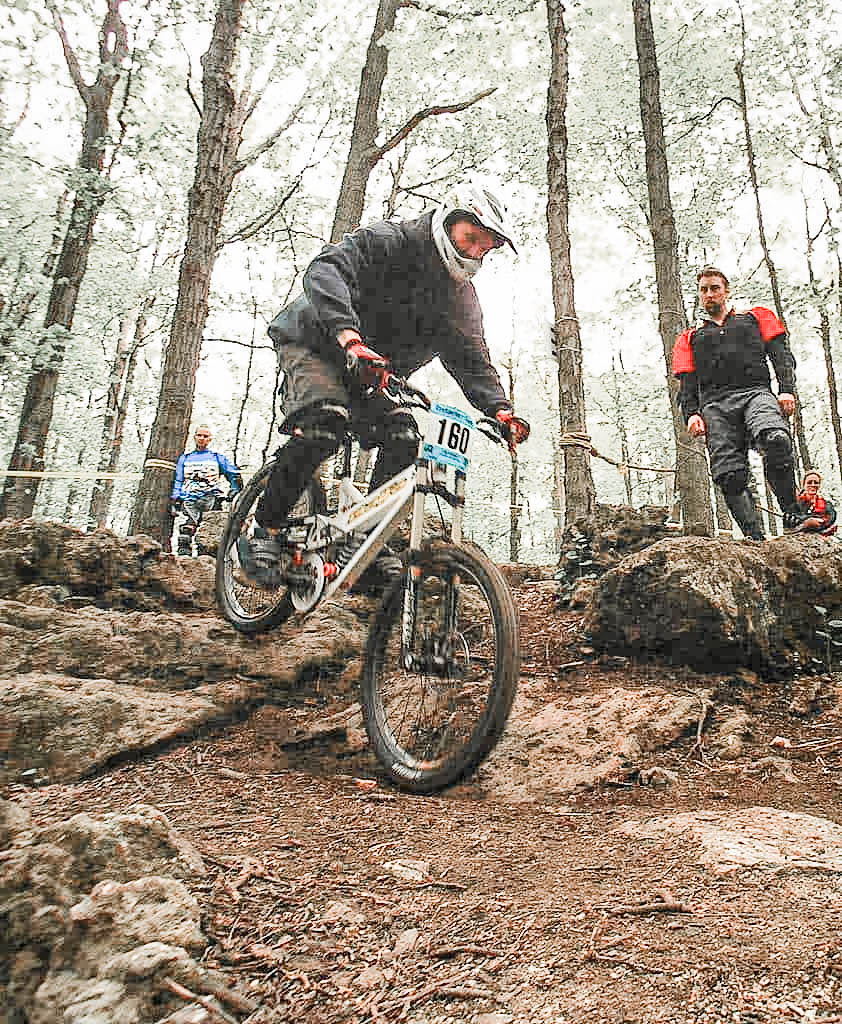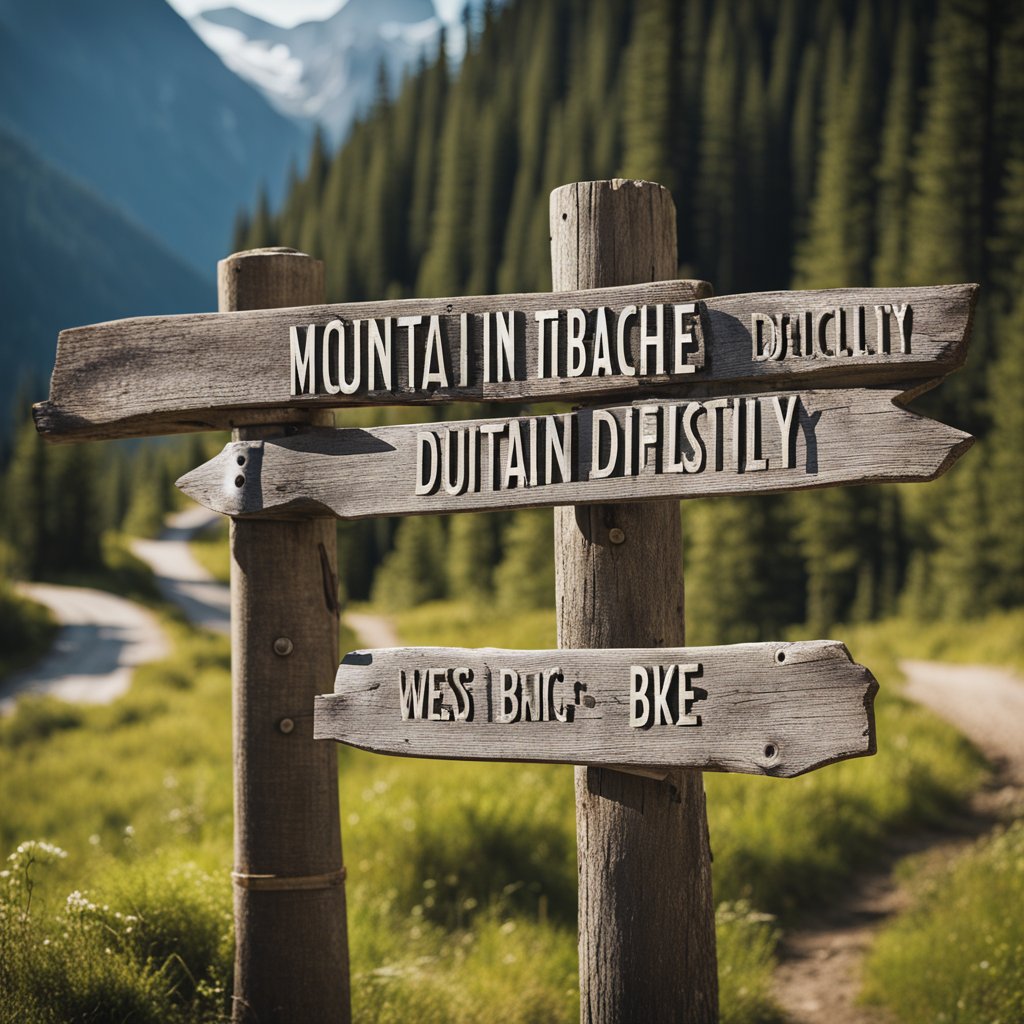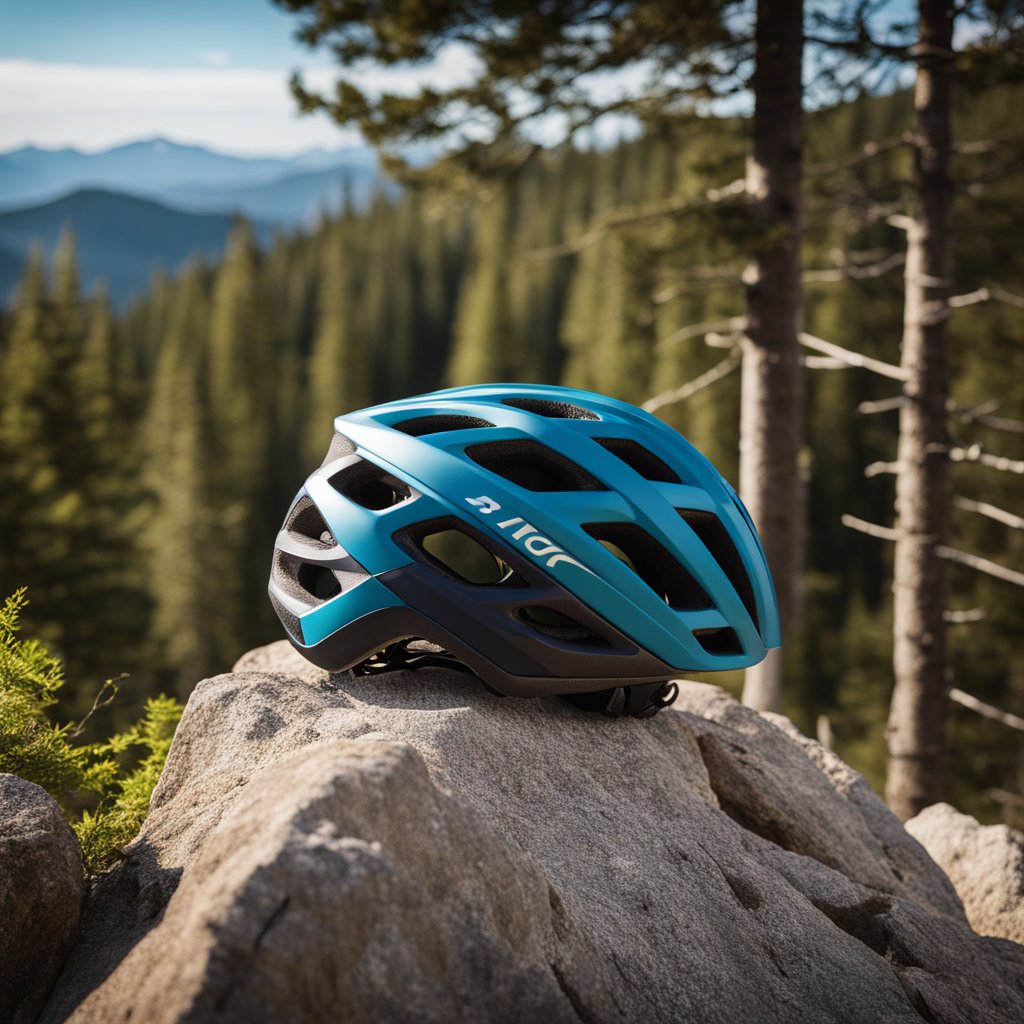Introduction to Trail Ratings
If you’re new to mountain biking, you may have noticed that trails are often rated with colored shapes, such as green circles, blue squares, black diamonds, and even double black diamonds. These shapes are used to indicate the difficulty level of the trail. Understanding these ratings is essential for any mountain biker, as it can help you choose the right trail for your skill level and avoid accidents.
The Importance of Difficulty Ratings
Mountain bike trail ratings are important because they provide a standardized way of communicating the level of difficulty of a trail to riders. This is especially important for beginners who are just starting out and may not have the experience or skills to tackle more challenging terrain. By knowing the difficulty rating of a trail, you can determine whether it’s suitable for your skill level and avoid getting in over your head.
Understanding the IMBA Trail Difficulty Rating System
The International Mountain Biking Association (IMBA) Trail Difficulty Rating System is the most commonly used system for rating the difficulty of mountain bike trails. This system uses a three-step system of green, blue, and black to indicate the level of difficulty of a trail.
The green circle is the easiest rating and is suitable for beginners. These trails are generally flat and have few obstacles. Blue square trails are intermediate and are suitable for riders with some experience. These trails may have steeper inclines, more obstacles, and tighter turns. Black diamond trails are the most difficult and are suitable for experienced riders only. These trails may have steep inclines, large obstacles, and tight turns. Double black diamond trails are the most challenging and are suitable for expert riders only. These trails may have extremely steep inclines, large obstacles, and tight turns.
By understanding the IMBA Trail Difficulty Rating System, you can choose the right trail for your skill level and have a safe and enjoyable ride.
Trail Rating Components

When it comes to understanding mountain bike trail difficulty ratings, there are several components to consider. These components include terrain and surface analysis, technical difficulty and obstacles, as well as elevation and gradient factors.
Terrain and Surface Analysis
The trail’s terrain and surface are crucial factors in determining its difficulty rating. Trails can range from smooth and flat to rocky and steep, and the surface can vary from dirt to loose gravel or even pavement. Trails with a smooth surface and gradual inclines are easier to ride, while those with rough terrain and steep inclines are more challenging.
Technical Difficulty and Obstacles
Technical difficulty and obstacles refer to the level of skill and experience required to navigate the trail. This can include tight turns, rock gardens, and drops. Trails with more technical features and obstacles are rated as more difficult. It’s important to note that obstacles can be subjective and vary from rider to rider, so it’s essential to assess your own skill level before attempting a trail.
Elevation and Gradient Factors
Elevation and gradient factors are also crucial in determining a trail’s difficulty rating. Elevation change, elevation gain, ascent, and descent are all factors that can impact the trail’s difficulty. Trails with significant elevation changes are typically more challenging, and steep inclines can be physically demanding. It’s essential to consider your fitness level and experience before tackling a trail with significant elevation changes.
Overall, understanding the components that make up a trail’s difficulty rating can help you choose the right trail for your skill level and experience. By considering factors such as terrain, technical difficulty, and elevation, you can ensure a safe and enjoyable ride.
Advanced Trail Features

When you’re ready to take your mountain biking skills to the next level, you’ll want to start exploring trails with advanced features. These trails are designed to challenge even the most experienced riders and will test your technical abilities and endurance.
Identifying Technical Trail Features
Technical trail features (TTFs) are man-made obstacles that require advanced skills to navigate. Some examples of TTFs include jumps, drop-offs, and berms. These features are often found on black or double black diamond trails and require a high level of skill and experience to ride safely.
Jumps are often found on flow trails and require the rider to launch off a ramp and land safely on the other side. Drop-offs are similar to jumps but require the rider to drop down from a height and land safely on the other side. Berms are banked turns that allow riders to maintain speed through turns and are often found on downhill trails.
Navigating Natural Obstacles
In addition to TTFs, advanced trails often feature natural obstacles such as rocks, roots, and narrow singletrack sections. These obstacles require riders to have excellent balance and bike handling skills to navigate safely.
Rocks and roots can be particularly challenging as they can be slippery and unpredictable. When riding over these obstacles, it’s important to maintain a loose grip on the handlebars and keep your weight centered over the bike. Look ahead and plan your line to avoid the most difficult sections.
Narrow singletrack sections can also be tricky to navigate, especially if they’re located on a steep slope. Keep your weight centered over the bike and maintain a steady speed to avoid losing control.
Overall, advanced trails offer a thrilling challenge for experienced riders looking to push their limits. With the right skills and equipment, you can safely navigate technical trail features and natural obstacles to take your mountain biking to the next level.
Rider Skills and Safety

Matching Skill Level to Trail Difficulty
When selecting a mountain bike trail to ride, it is important to match your skill level to the trail difficulty. Riding a trail that is too difficult for your skill level can be dangerous and lead to injury. On the other hand, riding a trail that is too easy can be boring and not provide a satisfying challenge.
Before heading out on a ride, assess your riding experience, fitness, and stamina. Be honest with yourself about your abilities and limitations. Use this information to make informed decisions about which trails to ride.
Most mountain bike trail difficulty ratings use a system of green, blue, black, and double black diamonds to indicate the level of difficulty. Green trails are the easiest, while double black diamond trails are the most difficult.
Safety Considerations and Trail Etiquette
Mountain biking can be a fun and exhilarating activity, but it is important to prioritize safety. Always wear a helmet and other protective gear, such as knee and elbow pads.
When riding on a trail, be aware of other riders and hikers. Yield to uphill traffic and slower riders. Use caution when passing other riders and always let them know you are approaching.
In addition to safety, it is important to follow trail etiquette. Stay on designated trails and avoid cutting switchbacks. Do not litter or disturb wildlife. Respect private property and obtain permission before riding on private land.
By following these guidelines and matching your skill level to trail difficulty, you can enjoy a safe and satisfying mountain biking experience.
Frequently Asked Questions

What do the different colors on MTB trail signs represent?
Mountain bike trail signs come in different colors, and each color represents a different type of trail. For example, green trails are the easiest, followed by blue, then black, and finally double black diamond trails, which are the most difficult. The color coding system is used to help riders choose a trail that is appropriate for their skill level.
How is the trail difficulty rating system structured for mountain biking?
Mountain bike trail difficulty ratings are based on a variety of factors, including the trail’s gradient, the presence of obstacles, and the technical difficulty of the terrain. The rating system is designed to help riders choose a trail that matches their skill level and experience.
Can you explain the IMBA Trail Difficulty Rating System used for mountain bike trails?
The International Mountain Bicycling Association (IMBA) Trail Difficulty Rating System is a widely used method for rating the technical difficulty of mountain bike trails. The system rates trails on a scale of 1 to 10, with 1 being the easiest and 10 being the most difficult. The rating takes into account the trail’s gradient, the presence of obstacles, and the technical difficulty of the terrain.
What are the various levels of mountain biking trails and what do they mean?
Mountain biking trails are typically classified into four levels of difficulty: easy, intermediate, difficult, and expert. Easy trails are generally flat and smooth, with few obstacles. Intermediate trails are more challenging, with steeper gradients and more obstacles. Difficult trails are even more challenging, with steep gradients, large obstacles, and technical terrain. Expert trails are the most difficult, with extremely steep gradients, large obstacles, and highly technical terrain.
How can I interpret mountain bike trail rating symbols when planning a ride?
Mountain bike trail rating symbols are used to indicate the technical difficulty of a trail. The symbols typically consist of a shape, such as a circle or diamond, with a number or letter inside. The number or letter represents the trail’s difficulty rating, with higher numbers or letters indicating more difficult trails. When planning a ride, it is important to choose a trail that matches your skill level and experience.
Are the mountain biking trail ratings similar to hiking trail difficulty ratings?
Mountain biking trail ratings are not the same as hiking trail difficulty ratings. While both rating systems take into account factors such as gradient and terrain, mountain biking trails are generally more technical and challenging than hiking trails. It is important to choose a trail that matches your skill level and experience, regardless of whether you are hiking or mountain biking.

Tim is the founder of SimpleMTB and has been mountain biking for decades. He raced in the Ontario Cup series during his teenage years and riding continues to be one of his favorite hobbies now as an adult.


